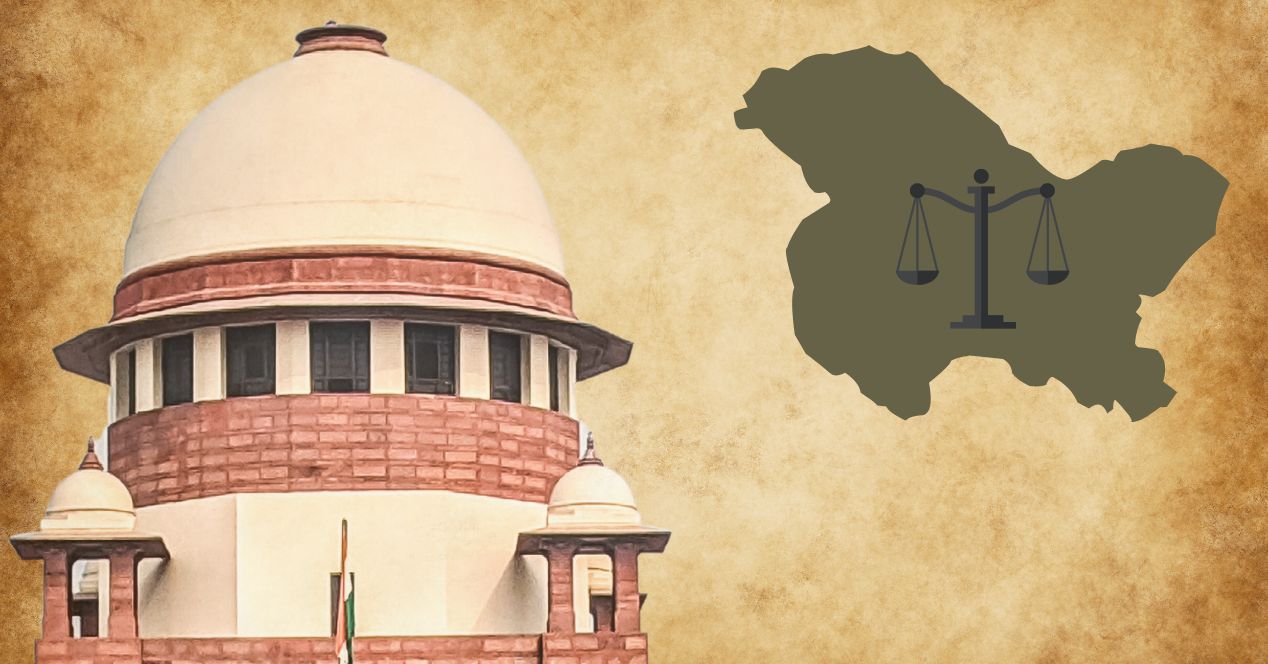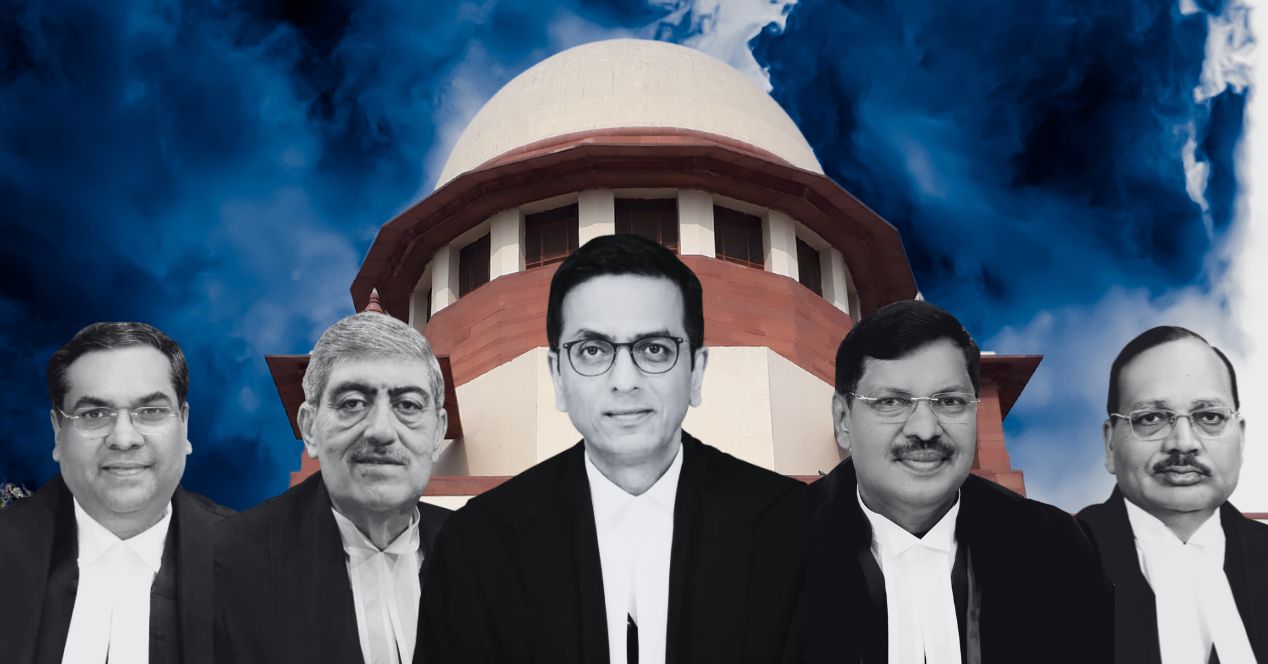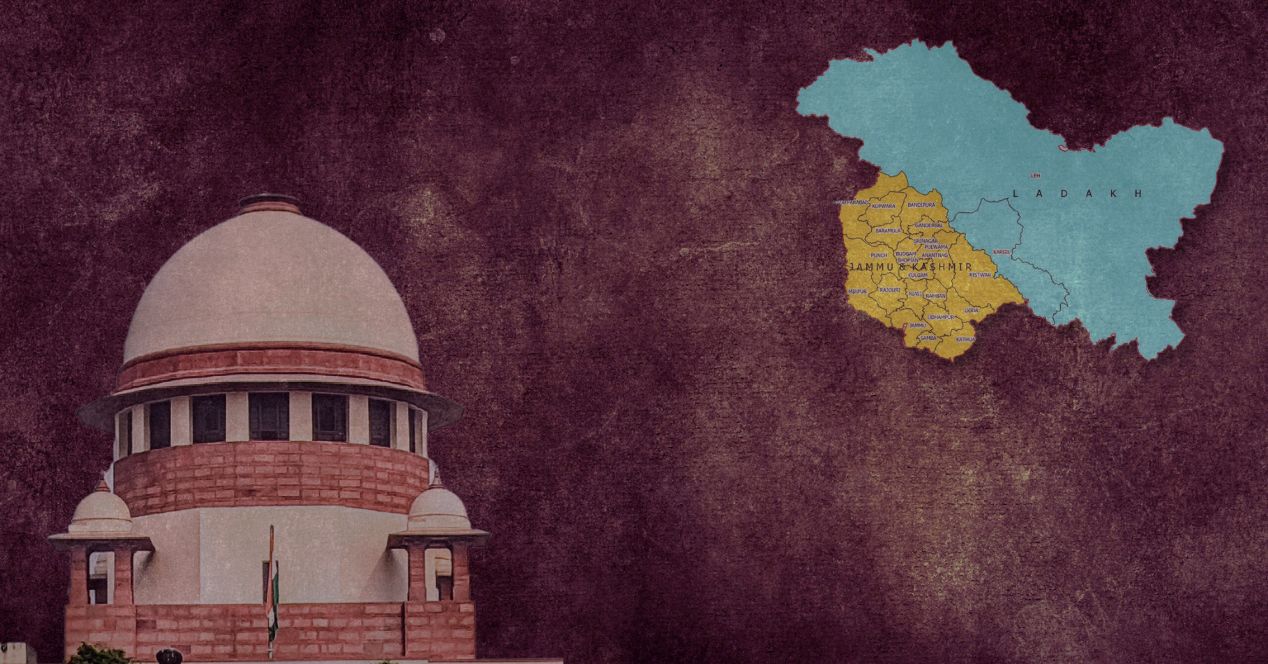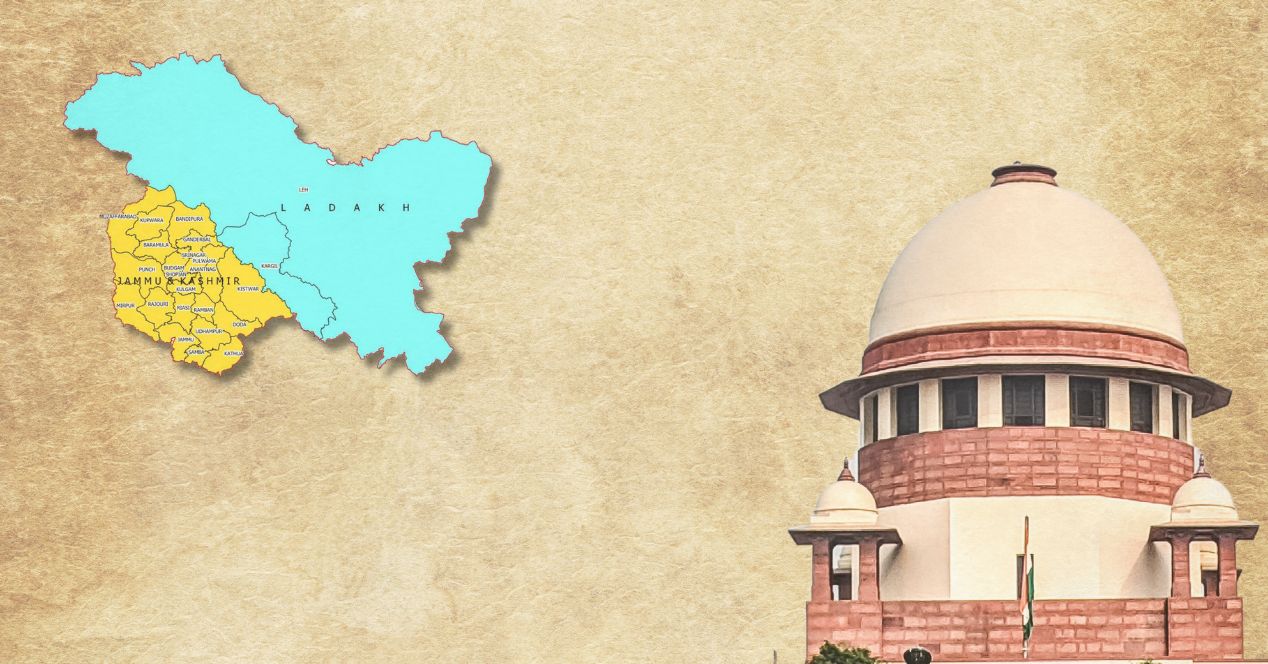Abrogation of Article 370 | Day 10: Constitution of J&K is merely an Act providing for internal governance of the state, argues Solicitor General
Challenge to the Abrogation of Article 370Judges: D.Y. Chandrachud CJI, S.K. Kaul J, Sanjiv Khanna CJI, B.R. Gavai J, Surya Kant J
Today, Attorney General R. Venkataramani opened the arguments on behalf of the Union government. He briefly summarised the respondents’ arguments and submitted that the abrogation of Article 370 was done following the “due process” of law.
Solicitor General Tushar Mehta appeared next. He said that the present matter was indeed “historic” because, for the first time in 75 years, the Court would be considering the privileges of the people of Kashmir. He stated that Article 370 had deprived the people of J&K of the Union’s welfare schemes and stressed that the abrogation of Article 370 conferred them with rights on par with citizens in the rest of the country. Mehta proposed that Article 370 promoted a “psychological duality” which was being taken advantage of by “forces against India.”
At one point during the proceeding, the petitioners objected to the Union submitting new documents. Mehta, pointed out that the petitioners were allowed to continue with their submissions without interruption. Further, taking issue with one of the sources relied on by the petitioners remarked: “If you can read Noorani, you can read a newspaper also…I have read the book, it is one-sided.” Chief Justice Chandrachud gently admonished Mehta with: “Ok Mr. Solicitor, you don’t have to go that far.”
Yesterday, the petitioners-side concluded arguments in the challenge to Article 370. Over nine days of hearings, the Bench heard arguments from 17 counsels for the petitioners. Their key arguments are summarised here.
Background
Article 370 of the Constitution of India provided the State of Jammu and Kashmir with a special constitutional status. The provision substantially limited Parliament’s power to legislate for the State compared to other states.
On August 5, 2019, the Union government diluted Article 370, revoking Jammu and Kashmir’s special status. First, President Ram Nath Kovind issued presidential order CO 272. This Order allowed the Union to amend Article 370 without the recommendation of the Constituent Assembly.
Since J&K was under President’s Rule at the time, the powers of the Jammu and Kashmir Legislative Assembly were vested in the Union Parliament. So, a few hours after CO 272 was issued, the Rajya Sabha recommended the abrogation of Article 370 through a Statutory Resolution under Article 370(3).
On August 6, 2019, President Kovind issued a Proclamation, CO 273, putting the Rajya Sabha’s recommendation into effect. All clauses of Article 370 ceased to operate, except Clause 1 which was amended to state that the Constitution of India applies wholly to the State, removing the special status awarded to Jammu and Kashmir.
On August 9, Parliament passed the Jammu and Kashmir Reorganisation Act, 2019. This Act bifurcated the State of Jammu and Kashmir into two Union Territories—J&K and Ladakh.
Petitions were filed challenging the constitutionality of the dilution of Article 370 and the bifurcation of the State into two Union Territories.
On August 28, 2019, a 3-Judge Bench led by former CJI Rajan Gogoi referred the case to a 5-Judge Constitution Bench.
On October 1, 2019, 5-Judge Constitution Bench of the Court comprising Justice N.V. Ramana, S.K. Kaul, R. Subhash Reddy, B.R. Gavai and Surya Kant decided to hear the case from November 14th, 2013. The petitioners sought the case to be placed before a larger Bench. On March 2nd, 2020, the Bench refused to refer it to a larger Bench.
On July 3, 2023, the Supreme Court listed the matter to a Constitution Bench led by Chief Justice D.Y. Chandrachud. The Bench assembled on July 11, 2023 and decided to hear the challenge from August 2, 2023.
Venkataramani: J&K surrendered sovereignty to India after Article 370 was adopted
Venkataramani spoke for a little over 10 minutes. He contended that the Instrument of Accession shows that all traces of sovereignty were surrendered to India. He argued that the only object of Article 370 was the constitutional integration of J&K to India. In the abrogation, no rights of representative democracy were taken away.
He contended that his perusal of all the 113 presidential proclamations related to J&K indicated there was no deviation from the due process in the Presidential Orders in question. He also stated that the Jammu and Kashmir Reorganisation Act, 2019, was valid.
Mehta: It is factually wrong to say J&K had a special status
Mehta, on his part, referred to historical documents, resolutions, legislations and speeches to counter the petitioners’ argument that Kashmir had a “special status.” Responding to the petitioners’ argument that J&K was the only state that had its own constitution in the 1930s, he pointed out that 62 states had their own constitution at the time.
In 1947, Mehta stated, according to the Mountbatten Plan, the princely states had the option to join India or Pakistan. There was no option for them to be independent at the time. This choice could be exercised based on several factors, Mehta told the Bench, but the most important factor was “geographical proximity”. Delhi could not be part of Pakistan, Mehta offered as an example.
The Solicitor General then focused on the petitioners’ argument that J&K was special as it only signed the Instrument of Accession with reservations and not a “merger agreement” like many of the other princely states. He suggested that this line of argument was flawed.
Firstly, he said that there were several other princely states that acceded to India subject to certain conditions. The example Mehta gave was of the United States of Kathiawar in Saurashtra, which made clear in its Instrument of Accession that it would retain governance over taxation.
Secondly, Mehta argued that signing a “merger agreement” was not a sine qua non to be integrated into India. He informed the Bench that there were several states that did not sign a merger agreement but were a part of India.
At this juncture, the Chief asked the Solicitor General to compile a list of states that joined India after signing a merger and a list of those which became a part of India without signing a merger. Mehta responded that the White Paper on States, which was part of the material on record, had these details, but he would submit a list to the Bench regardless. Senior Advocate Gopal Sankaranarayanan, who argued for the petitioners yesterday, jumped in to inform the Bench that states like Mysore, Saurashtra, Madhya Bharat, and East Punjab had integrated into India without a merger agreement.
For these reasons, the Solicitor General concluded that it is “factually wrong” to say that J&K had a special status because it had its own Constitution or because it acceded to India with certain reservations and never signed a merger agreement.
However, the Chief Justice pointed out that other states had acceded through their own volition, but J&K had “bucked that trend” and taken the “370 route.” Mehta responded to this by reiterating that the instrument of merger was not necessary for complete integration.
Mehta: Constitution of J&K is merely an Act for internal governance
Petitioners had argued that J&K had only relinquished its external sovereignty to the extent that it allowed the Union to make laws on defence, communications and foreign affairs. Over time, this scope would expand, in consultation or with concurrence of the state legislature. This relationship was crystallised in its own constitution. The state had retained its autonomy and its internal sovereignty.
Today, Mehta stated that this argument was “not well founded” and that the Petitioners were “confusing internal sovereignty with autonomy.” The relationship with J&K recognised the federal structure, which vested upon it a certain degree of autonomy. This, he said, was no different from other states where autonomy was vested through List II (State List) of the Seventh Schedule of the Indian Constitution. The states enjoy their autonomy while still being a part of India. Similarly, J&K had retained its autonomy, but its sovereignty was completely relinquished, and it had become a part of the “union of states”.
The Chief Justice chimed in to note that it was not just states that enjoyed autonomy, but institutions too. The Court itself enjoys the autonomy to hear cases of a constitutional nature, but does not retain any sovereignty in that process. However, he said, the petitioners’ arguments were not without merit—the adoption of Article 370 showed that a “modicum of internal sovereignty was not ceded to the Union.”
Mehta then referred to the Proclamation for the State of Jammu and Kashmir, which was issued by the state’s ruler Yuvraj Karan Singh in November 1949. Mehta quoted the following bit from the proclamation: “That the provisions of the said Constitution (Indian) shall, as from the date of its commencement, supersede and abrogate all other constitutional provisions inconsistent therewith which are at present in force in this State.”
Mehta stated that this proclamation came at a time when the J&K Constituent Assembly had not yet been formed. The ruler of the princely state, who enjoyed complete authority to surrender the sovereignty of J&K to India, could not have then formed a “plenary constituent assembly” which could frame a document that had the same “sanctity and sovereignty of the constitution of the nation in which the state merged.”
Therefore, Mehta insisted, the Constitution of J&K was “merely an Act providing for internal governance of the state,” which had already become an integral part of the Union of India. He also said that this proved that the J&K Constituent Assembly was no different from a Legislative Assembly. Justice Khanna and the Chief Justice sought further information relating to this line of argument. Mehta is expected to elaborate on it in the upcoming hearings.
The Solicitor General will resume arguments for the Union on Monday, 28 August, 2023.










